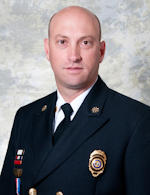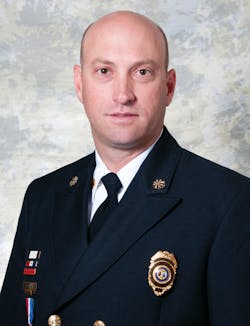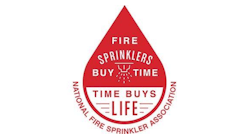Fire Politics: The Politics of Life Safety
Recent fires and the headlines that follow continue to highlight a significant fire problem. For one, just a few weeks ago, 2-year-old Nora Lamirande died in a house fire in the Van Buren community of New York. A tragedy—a preventable tragedy. The list of names grows longer, and USFA reports chronicling the number of deaths per week confirm the reality. Further, recent fires that have taken the lives of our fellow firefighters—in everything from single-family dwellings to high rises—should cause us to question our approach to the problem. With this in mind, let’s take a quick size-up of our current state of affairs regarding building and fire codes and how we embrace the current code adoption process.
Problems in the Northeast
New Jersey Governor Chris Christie just vetoed a portion of the New Home Fire Safety Act (A1698), which would have brought New Jersey up to the minimum National Building Code. His reasoning for doing so was the difficult rebuilding after Hurricane Sandy. Of course I am sympathetic with those impacted by the hurricane, but because of the governor’s veto, more houses and lives could be destroyed. The difference is the timeframe in which it will occur.
Additionally, New York hasn’t updated its statewide code since 2010, and that adoption was based on 2006 I-codes. A 2-year-old is dead because of the lack of staying current with codes. The house in which Nora Lamirande died was built in 2013, so if New York or the Van Buren community could have or would have adopted the latest International Residential Code (IRC), Nora would be alive today. Yes, I can say that with certainty because we have conducted the research with test burns and have daily examples to prove it. Fire sprinklers work, and maintaining current codes provides for fire sprinklers and a lot more life safety features that aren’t cherry-picked by politics. We need to say enough is enough, get involved and take a stand for code adoption that enhances the bottom line, the minimum code.
What you can do
My mentor, Jim “JD” Dalton, titled his portion of Fire Team USA (fireteamusa.com) “The Politics of Life Safety.” (Fire Team USA is a 1 1/2-day conference on fire protection.) JD brought this segment to life with examples from across the nation. He would tell of progressive leaders like Dave Gratz, Ronny Coleman, Lou Witzeman, Tom Siegfried, Dave Hilton and countless others. JD would ask the participants, “Why do we take something so simple and make it so convoluted?” I believe it’s time for us to lead, like these pioneers did. We need to be involved and be proactive.
It’s time for the fire service to truly engage in the codes and standards adoption process. We have to deal with the modern built environment and building contents. We need to ensure that properly installed smoke alarms and fire sprinklers are in every building built from this day forward, as well as any mid- or high-rise residential building that already exist. Recent tragedies in single-family dwellings with children and high rises with the elderly must be stopped. Also, we must be vigilant about National Fallen Firefighters Foundation (NFFF) Life Safety Initiative 15, which reads, “Advocacy must be strengthened for the enforcement of codes and the installation of home fire sprinklers.” This is especially true with recent firefighter LODDs in single-family dwellings and, most recently, with Washington D.C. Lt. Kevin McRae.
If you are building a new home, remodeling your current home, or moving a loved one to college or an assisted living facility, demand fire sprinklers. Make sure the community uses the latest code and that the inspector is inspecting on your behalf. We have to lead by example so we can be role models to our families, our communities and our country. Take the time to learn about the components associated with construction in your community. Don’t let the politics of life safety create 50 more years of unnecessary fire deaths.
We can do it, we have proven it time and time again that we will respond even when the challenge is political. We will lead and we will protect ourselves, our families and our communities. That’s what makes the fire service strong. Now is the time to step up, make a difference and save lives.

Shane Ray
SHANE RAY has been a volunteer firefighter since 1984 and a career firefighter since 1994. He has also served as a mayor for six years and the Tennessee Fire Chief’s Legislative Chairman for 12 years. Ray’s love for politics started as fire chief of the Pleasant View Volunteer Fire Department in Tennessee, where he served 13 years. He then served under Governor Nikki Haley in South Carolina as superintendent and state fire marshal. He currently serves as the president of the National Fire Sprinkler Association and is a lifetime member of the Pleasant View Volunteer Fire Department. Throughout his career, he has been committed to public service with a “Do It Different” mentality and that all stakeholders are important.







